Related Research Articles

The Ford Model T is an automobile that was produced by Ford Motor Company from October 1, 1908, to May 26, 1927. It is generally regarded as the first affordable automobile, which made car travel available to middle-class Americans. The relatively low price was partly the result of Ford's efficient fabrication, including assembly line production instead of individual handcrafting. It was mainly designed by an American and two Hungarian engineers. The Model T was colloquially known as the "Tin Lizzie", "Leaping Lena" or "flivver".

The Winton Motor Carriage Company was a pioneer United States automobile manufacturer based in Cleveland, Ohio. Winton was one of the first American companies to sell a motor car. In 1912 Winton became one of the first American manufacturers of diesel engines.
The Adams Company is an American manufacturing concern. It was founded in 1883 and is based in Dubuque, Iowa, United States.

The Duryea Motor Wagon Company, established in 1895 in Springfield, Massachusetts, was the first American firm to build gasoline automobiles.
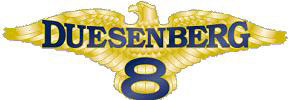
Duesenberg Automobile and Motors Company, Inc. was an American racing and luxury automobile manufacturer founded in Indianapolis, Indiana, by brothers Frederick and August Duesenberg in 1920. The company is known for popularizing the straight-eight engine and four-wheel hydraulic brakes. A Duesenberg car was the first American car to win the 1921 French Grand Prix and Duesenbergs won the Indianapolis 500 in 1924, 1925, and 1927. Transportation executive Errett Lobban Cord acquired the Duesenberg corporation in 1926. The company was sold and dissolved in 1937.
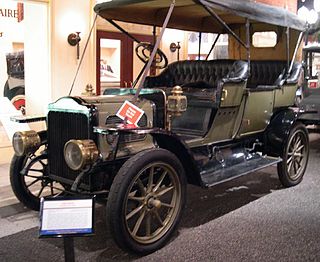
A steam car is a car (automobile) propelled by a steam engine. A steam engine is an external combustion engine (ECE) in which the fuel is combusted outside of the engine, unlike an internal combustion engine (ICE) in which fuel is combusted inside the engine. ECEs have a lower thermal efficiency, but carbon monoxide production is more readily regulated.

Mason Motors, founded by A. C. Mason in cooperation with William C. Durant, was a U.S. truck manufacturer based in Flint, Michigan. As a subsidiary of Durant Motors, Mason Truck built Road King Speed Trucks in the early 1920s. Mason Motors also built automobile engines in 1911, who first led Buick's engine works in Flint. That company was absorbed by Chevrolet in 1915, but remained under the Chevrolet umbrella until January 1, 1918, when it became known as the Motor and Axle Division of Chevrolet.

Fageol Motors was a United States manufacturer of buses, trucks and farm tractors.
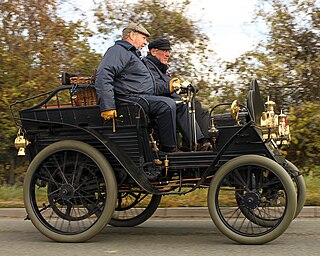
The Mors automobile factory was an early French car manufacturer. It was one of the first to take part in automobile racing, beginning in 1897, due to the belief of the company founder, Émile Mors, in racing's technical and promotional benefits. By the turn of the century, automobile racing had become largely a contest between Mors and Panhard et Levassor.

Development of the automobile started in 1672 with the invention of the first steam-powered vehicle, which led to the creation of the first steam-powered automobile capable of human transportation, built by Nicolas-Joseph Cugnot in 1769. Inventors began to branch out at the start of the 19th century, creating the de Rivas engine, one of the first internal combustion engines, and an early electric motor. Samuel Brown later tested the first industrially applied internal combustion engine in 1826.

Ross Winans (1796–1877) was an American inventor, mechanic, and builder of locomotives and railroad machinery. He is also noted for design of pioneering cigar-hulled ships. Winans, one of the United States' first multi-millionaires, was involved in national and state politics, a southern-sympathizer and was a vehement "states' rights" advocate. Winans was briefly arrested after the Baltimore riot of 1861. His outspoken anti-federal stance as a member of the Maryland House of Delegates, the lower chamber of the General Assembly, led to his temporary arrest on May 14, 1861. At the time of his arrest, Winans was returning on a Baltimore and Ohio Railroad train from an early session of the legislature that was being held in the western Maryland town of Frederick to avoid the Union Army-occupied state capital of Annapolis in April–May 1861 to consider the possibilities of state secession during the early decisive period of the American Civil War. Winans was related to James McNeill Whistler through marriage.
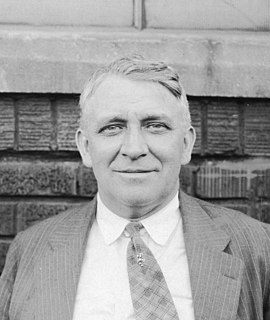
Frederick Samuel Duesenberg was a German-born American automobile and engine designer, manufacturer and sportsman who was internationally known as a designer of racecars and racing engines. Duesenberg's engineering expertise influenced the development of the automobile, especially during the 1910s and 1920s. He is credited with introducing an eight-cylinder engine, also known as the Duesenberg Straight-8 engine, and four-wheel hydraulic brakes, a first for American cars, in addition to other mechanical innovations. Duesenberg was also patentholder of his designs for a four-wheel hydraulic brake, an early automatic transmission, and a cooling system, among others. Fred and his younger brother, August "Augie" Duesenberg, shared the patents, filed in 1913 and renewed in 1918, for their "walking beam" four-cylinder engine and the Duesenberg Straight 8.
The De Schaum was an American automobile manufactured in Buffalo, New York from 1908 to 1909. The company offered a 7 hp High wheeler called the De Shaum and Seven Little Buffaloes.

John William Lambert was an American automobile manufacturer pioneer and inventor. He is the inventor of the first practical American gasoline automobile. He operated large manufacturing companies that made transmissions, stationary gas engines, farm tractors, commercial motor trucks, railroad inspection vehicles, and various gasoline driven street cars. He had over 600 patents. In 1891, he built a working gasoline automobile, one year before the Duryea Brothers constructed theirs.

The Union automobile was a vehicle manufactured by the Union Automobile Company from 1902 until 1905. It was designed by John William Lambert, who had developed the three-wheel Buckeye gasoline buggy in 1891. Over the next decade, Lambert substantially refined the vehicle, with modifications including an additional wheel, a more powerful engine, and a new transmission system. The Union Automobile Company was formed as a subsidiary of Lambert's Buckeye Manufacturing Company solely to manufacture the Union, which took its name from Union City, Indiana, the city where it was built and which endorsed its production. In total, the company built over three hundred Union automobiles, before development shifted to the Lambert automobile, the Union's successor.

The Lambert automobile and Lambert truck were vehicles built from 1905 through 1916 by the Lambert Automobile Company in Anderson, Indiana, United States. The Lambert automobile was an outgrowth from the Union automobile made by the Union Automobile Company, a previous vehicle that was being manufactured by John William Lambert. The factory manufactured about 3,000 automobiles and trucks per year by 1915 and had several models ranging in price from $1,200 to $3,000 at the time. The vehicles came with a gearless friction drive transmission. The demise of the manufacture of automobiles and trucks came about because of World War I.

Lauraville is a neighborhood in northeast Baltimore, Maryland. The neighborhood is bounded on the east by Harford Road, on the north by Echodale Avenue, on the south by Argonne Drive and Herring Run Park, and on the west side by Morgan Park and Morgan State University, with East Cold Spring Lane passing through the center of Lauraville.

The Baltimore Steam Packet Company, nicknamed the Old Bay Line, was an American steamship line from 1840 to 1962 that provided overnight steamboat service on Chesapeake Bay, primarily between Baltimore, Maryland, and Norfolk, Virginia. Called a "packet" for the mail packets carried on government mail contracts, the term in the 19th century came to mean a steamer line operating on a regular, fixed daily schedule between two or more cities. When it closed in 1962 after 122 years of existence, it was the last surviving overnight steamship passenger service in the United States.
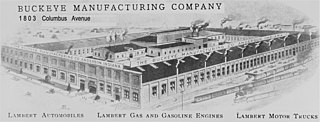
The Buckeye Manufacturing Company was a company founded in 1884 by John William Lambert and his family members originally to manufacture horse drawn buggy parts in Union City, Ohio. The enterprise started with $2,000 and six men and some helper boys. The company got involved in making tools and one early horseless carriage automobile.
Two Sharp automobiles were manufactured during the Brass Era of automobiles. The earliest was the Sharp Arrow built by the Sharp Arrow Automobile Company in Trenton New Jersey from 1908 to 1910. The second was the SEM or Sharp cyclecar built by the Sharp Engineering & Manufacturing Company in Detroit, Michigan in 1914.
References
- 1 2 3 Kimes, Beverly Rae; Clark Jr., Henry Austin (1996). Standard Catalog of American Cars 1805-1942 (3rd ed.). Krause Publications. ISBN 978-0-87341-428-9.
- 1 2 3 Georgano, Nick (2001). The Beaulieu Encyclopedia of the Automobile (3 vol. ed.). Fitzroy Dearborn Publishers. ISBN 1-57958-293-1.